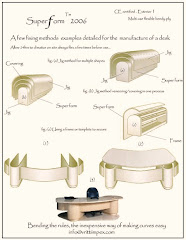BBC World Service radio, frequency 12.095khz African Service.
I was listening to an Indian proffesor discusing the last twenty years of his work. I had missed the start of the program but could still grasp a part of what he was saying. What caught my attention was the fact they can record the work as its happening at 40,000,000 pictures per second!
As you can see, there is a central “barrel” portion, and two “forward disks”. The detectors themselves are rectangular, and, as the name implies, segmented into very small pixels about a tenth of a millimeter in size. That’s a lot larger than the pixel size in your digital camera. But this detector can take 40 million pictures a second, keeping the interesting ones and discarding the vast majority.
If we could strip away all the support frames, cooling, electronics, etc. from the pixel detectors, leaving only the detectors themselves, they would have an arrangement sort of like the diagram above.
What I ask can we do with 40 million pictures a second! thats some camera.
Inside the machine, it passes under a few countries I believe.
The heart of the pixel detector is the readout chip, a silicon microchip specifically designed and fabricated for this detector, in this experiment. The effort to develop the readout chip was led by Roland Horisberger of the Paul Sherer Institut in Villigen, Switzerland. Each chip has over 4000 input channels arranged in a grid; each channel is bump-bonded to a sensor channel. The sensors are also very thin silicon wafers with one surface segmented into pixels. Each pixel channel can sense when a certain minimum amount of charge has been deposited by a passing charged particle, digitizes and time-stamps it, and sends it out onto the readout bus when a trigger signal matching the time stamp is received. All the thousands of readout chips in the detector do this in parallel, ultimately sending the torrent of data out on optical fibers to data acquisition electronics modules in the service cavern adjacent to the main detector cavern.
The PSI group built the central barrel portion of the CMS pixel detector, and the forward disks, which are somewhat more complicated mechanically, were built by a consortium of US universities and Fermilab. The forward disk detectors were assembled at Fermilab and then transported to CERN for final assembly, testing, and now installation.
Read the link for more on this story.
Roy
A comment in from a regular blog viewer in England.
That's all very interesting stuff but it must be costing a fortune and is completely unproductive as far as income, it just consumes money. The original idea of such a collider was to learn how to produce atomic fusion, we now have atomic fishion that power out nuke stations but this is a dirty business producing active waste that lasts thousands of years. If they could crack the fusion problem it would lead to unlimited power without the active waste problem so I wonder what they are messing about with pixel detectors for unless its to find out how to get the particles to collide in such mass that they get fusion? It's all terribly technical and employs thousands of boffin's.
Notty
That's all very interesting stuff but it must be costing a fortune and is completely unproductive as far as income, it just consumes money. The original idea of such a collider was to learn how to produce atomic fusion, we now have atomic fishion that power out nuke stations but this is a dirty business producing active waste that lasts thousands of years. If they could crack the fusion problem it would lead to unlimited power without the active waste problem so I wonder what they are messing about with pixel detectors for unless its to find out how to get the particles to collide in such mass that they get fusion? It's all terribly technical and employs thousands of boffin's.




